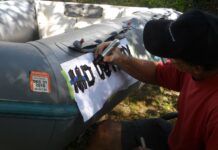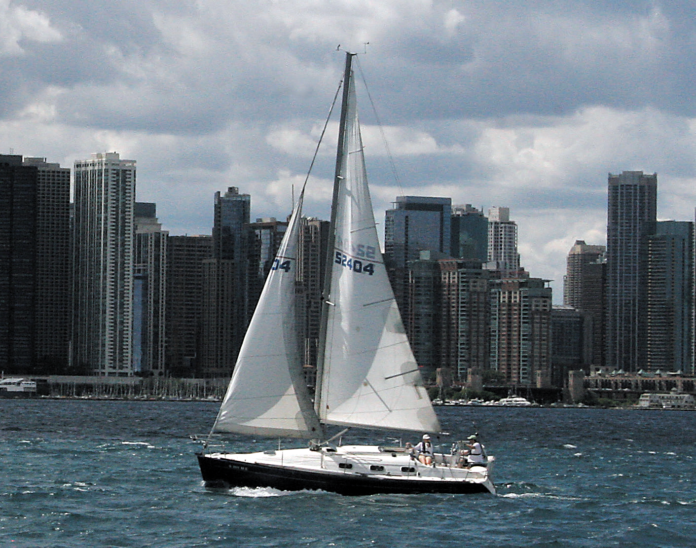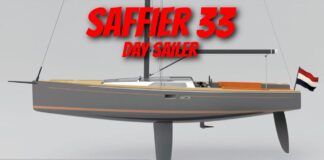One of my biggest mistakes in life was waiting so long to sail the Great Lakes.
This realization struck me last summer as I strolled down Chicagos Navy Pier and watched so many sails dance across the azure water. Coincidentally, Brad Kuchinic, a reader who lives in Chicago, had recently e-mailed Practical Sailor with a question about his Ericson 34, Nomad – the boat featured in this months boat test.
In less time that it takes to jump aboard the L, I invited myself for a sail. (Social niceties go out the window when Lake Michigan is calling.)
And what a great lake it is. For me the most thrilling part was playing with the turbulence from the shore-the rush and whisper of wind as it funneled down canyon avenues. The way the boat leapt forward in each puff, and the quick response of the helm, reminded me of cruising along the steeper islands of Indonesia, where sudden gusts of wind would squeeze and accelerate through saddles and gaps.
This terrain-induced turbulence, often more powerful and usually more predictable than open-water gusts, offers a perfect test for boat-handling skills. And these conditions always present an interesting puzzle: What sail plan will work best?
With the wind jumping from 10 to 18 knots and then back to 10 again, the usual approach is to carry canvas for about 10 knots and in the gusts make adjustments to the course or trim- feather the main or ease sheets. The goal is to be most efficient under the predominant wind speed.
So long as there’s a hand on the helm and the jib doesn’t flog wildly, this can be a highly efficient and fun approach. In Chicago, the places of the strongest turbulence are familiar to local sailors, so they can criss-cross the slots again and again, refining their tactics each time. This kind of gust-busting makes for a wonderful game and great practice-even better with cup holders.
For a more leisurely cruising sail, you can carry sails that are a better match for the gusts. This was the tactic we used while hugging close to the mountainous islands of Indonesia, often the only place to find wind on the leeward side of some islands.
The main reason for our conservative sail plan was to reduce the burden on the self-steering windvane. The reduced sail plan slowed us down a tad, but it made life much more agreeable. It was a conscious compromise-a slower pace for the sake of a steadier course.
Aggressively reaching through gusts on a long coastal passage can be fast and fun, but can have unintended consequences. When steering by windvane or hand, the track can start gradually creeping shoreward. Suddenly, the reef that you were going to clear by a 1/2 mile now looms as a line of breakers ahead.
Its easy mistake to make, and one that you only want to make once.









































